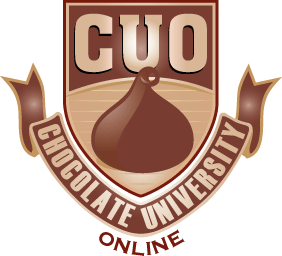Foreign chocolate brands such as Dove, Cadbury and Hershey’s have now captured about 70% in the Chinese chocolate marketplace. As Barry Callebaut, the world’s largest chocolate manufacturer with 25% in the global marketplace, recently opened its first chocolate factory in China in Suzhou City, the best 20 chocolate firms in the globe have now all entered the Chinese market place. But inside the face of international competitors, China’s neighborhood chocolate corporations have been further suppressed down the worth chain.
Second biggest chocolate market
As the CHF 4 billion-revenue-per-year Barry Callebaut setup its first production line in Suzhou, a total multinational chocolate sector chain can also be emerging. Sector insiders recommended that this would be a blow to neighborhood Chinese chocolate firms in this globalized competitors. It more indicated that retaining up with international competition is specifically important, or the Chinese market chain will develop into much more vulnerable.
In recent years, the global chocolate marketplace has notably slowed down, with only 2-3% growth per annum. This really is primarily because per capita chocolate consumption in created countries is currently at a high level, averaging 11 kg. Alternatively, China’s per capita chocolate consumption is only 0.1 kg, and its domestic chocolate industry has been growing at a staggering 10-15% per year, with an estimated marketplace potential of US$2.7 billion. Hence China has come to be the world’s second most significant chocolate marketplace only behind the US. The world’s top 20 chocolate businesses have all entered China, and you can find more than 70 imported or JV chocolate brands in today’s Chinese market.
Barry Callebaut has created it clear that they may be coming to share and participate in China’s economic growth. It plans to create the Suzhou factory into the biggest among its 38 factories globally, and realize a 6-fold sales enhance in the subsequent five years via the Suzhou factory’s high capacity. “We hope we are able to fully utilise this factory’s capacity to rapidly boost output from 25,000 tons to 75,000 tons, generating it the world’s biggest chocolate factory,” stated Barry Callebaut CEO Patrick De Maeseneire.
Multinational ambitions
It can be understood that Barry Callebaut’s new plant in Suzhou will develop into the company’s Asia-Pacific headquarter, together with a sales network centre for serving China and multinational food producers and specialised customers. Key brands, which include Cadbury, Hershey’s and Nestle, all at the moment have substantial quantity of outsourcing manufacturing contracts with Barry Callebaut, whose OEM output of cocoa liquor and chocolate goods amounts to 15-20% of each and every from the three important brands’ annual output. So the Swiss Barry Callebaut is indeed the Significant Brother of the international chocolate market.
The truth is, even just before the arrival of Barry Callebaut, China’s neighborhood chocolate corporations had already been losing market shares to multinational competitors. The US Hershey’s has determined to plough the Chinese industry, planning to achieve 23% share from the neighborhood market place by 2010 as well as the runner-up position in China. Meanwhile, Korean and Japanese chocolate producers are also accelerating their entry in to the Chinese marketplace.
Local corporations not within the neighborhood industry
Though the quickly developing Chinese chocolate market place is excellent news for its neighborhood chocolate companies, Chinese consumers currently are regularly referring to foreign brands such as Dove, Cadbury, Hershey’s and Ferrero but seldom mentioning neighborhood brands.
As a foreign product, China only includes a chocolate manufacturing history of less than 50 years, so there is certainly inevitable gap behind foreign brands when it comes to production tactics and technologies. On account of inappropriate processing gear and incomplete production facilities, item superior assurance is hard for a lot of regional chocolate providers. Furthermore, most Chinese chocolate organizations are weak in item R&D, resulting in slow item changes and updates. At present, most regional chocolate companies are stuck in an embarrassing situation of low item top quality.
The above industry issues have costed local companies’ opportunities to participate inside the competition for the Chinese chocolate market place. Multinational chocolate brands have come to the Chinese industry one by one since the 1990s, and now they’re in a dominant marketplace position. With their considerable financial power, multinationals can play their technological and cultural cards, in addition to promoting their premium high quality and unique tastes, to rapidly capture the Chinese marketplace.
As Barry Callebaut finally entered the Chinese industry, its Suzhou factory will make chocolate production even cheaper for multinational brands. For local Chinese businesses that are mostly within the low-end market, they may no longer hold this market segment firm.
Keep up with the globalization
Statistics showed that you’ll find about 63 large-scale local chocolate businesses in China, with annual production of 150,000 tons. Statistics from industry associations also revealed that China at present has about 250 chocolate companies in total.
Sector insiders pointed out that the Chinese food and beverage sector is a highly and internationally competitive marketplace. The vast potential of China’s chocolate marketplace is not only for foreign brands, but is also laid in front of local chocolate producers. The nearby chocolate market is now in a structural change and survival-of-the-fittest stage, and no doubt the entry of foreign brands will present challenges to the local business. But if regional chocolate companies can participate in this international competitors, it could not only drive the chocolate demand from Chinese buyers, but also promote development of China’s chocolate industry.
Nearby Chinese chocolate providers need to constantly improve their product superior, select finer raw ingredients, upgrade production facilities, adopt international technologies, enhance product innovation and brand management. Only then can they compete with multinational organizations on a level-playing field, and make a breakthrough in this foreign-dominated Chinese chocolate marketplace.




